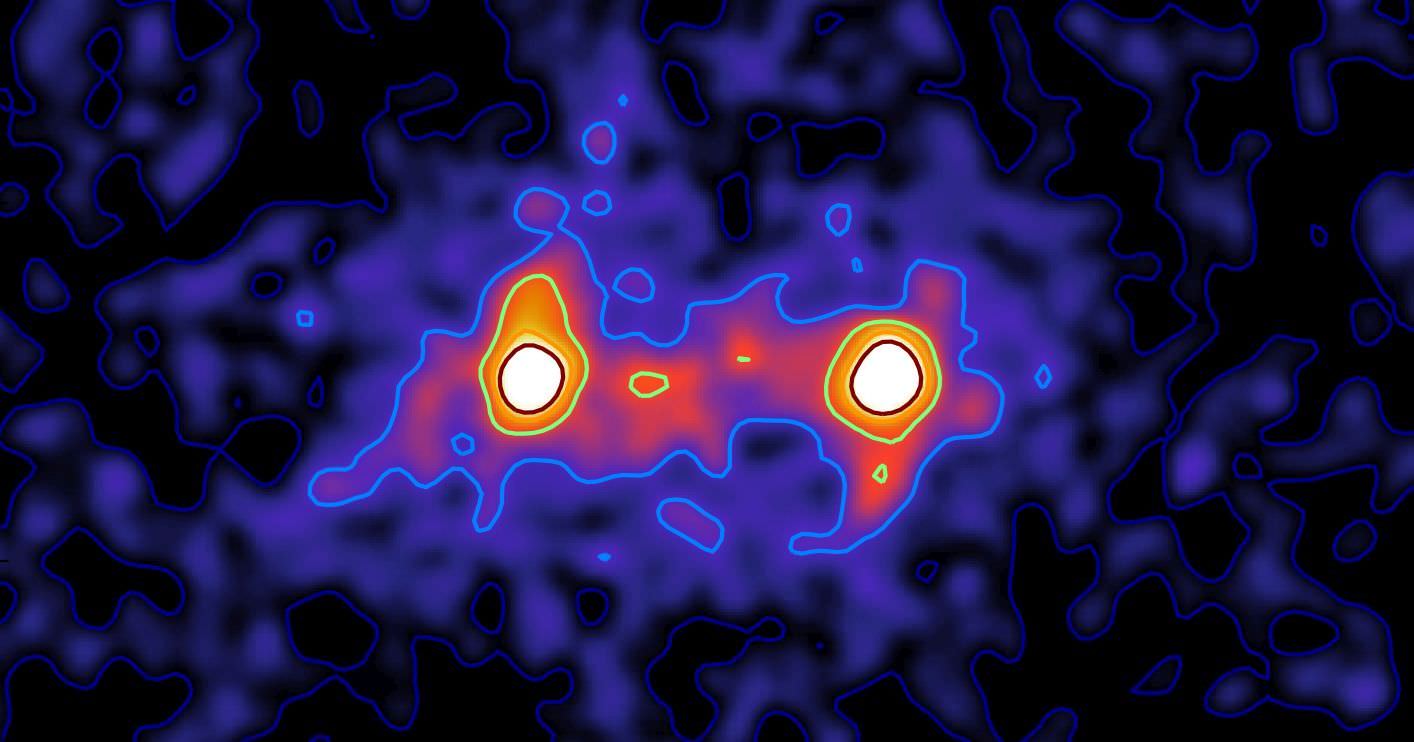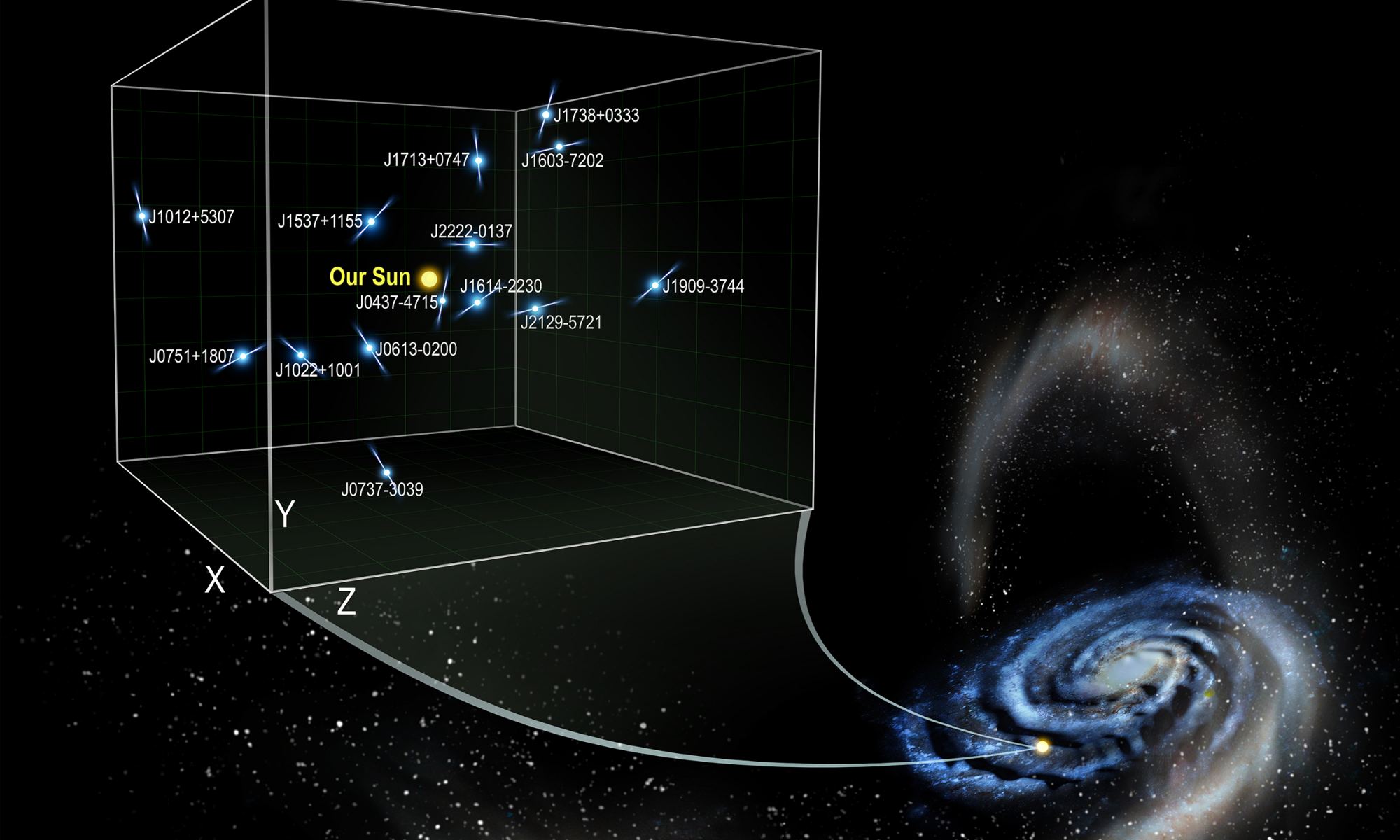As our Sun moves along its orbit in the Milky Way, it is gravitationally tugged by nearby stars, nebulae, and other masses. Our galaxy is not a uniform distribution of mass, and our Sun experiences small accelerations in addition to its overall orbital motion. Measuring those small tugs has been nearly impossible, but a new study shows how it can be done.
Continue reading “Astronomers can use Pulsars to Measure Tiny Changes of Acceleration Within the Milky Way, Scanning Internally for Dark Matter and Dark Energy”Slime Mold Grows the Same as the Large Scale Structure of the Universe

Matter in the Universe is not distributed equally. It’s dominated by super-clusters and the filaments of matter that string them together, surrounded by huge voids. Galaxy super-clusters are at the top of the hierarchy. Inside those is everything else: galaxy groups and clusters, individual galaxies, and solar systems. This hierarchical structure is called the “Cosmic Web.”
But how and why did the Universe take this form?
Continue reading “Slime Mold Grows the Same as the Large Scale Structure of the Universe”Researchers Image Dark Matter Bridge Between Galaxies

Dark matter is mysterious stuff, because we can’t really “see” it. But that hasn’t stopped scientists from researching it, and from theorizing about it. One theory says that there should be filament structures of dark matter connecting galaxies. Scientists from the University of Waterloo have now imaged one of those dark matter filaments for the first time.
The two scientists, Seth D. Epps and Michael J. Hudson, present their results in a paper at the Monthly Notices of the Royal Astronomy Society.
Theory predicts that filaments of dark matter connect galaxies together, by reaching from the dark matter halo of one galaxy to the same halo in another galaxy. Other researchers have found dark matter filaments connecting entire galaxy clusters, but this is the first time that filaments have been imaged between individual galaxies.
“This image moves us beyond predictions to something we can see and measure.” – Mike Hudson, University of Waterloo
“For decades, researchers have been predicting the existence of dark-matter filaments between galaxies that act like a web-like superstructure connecting galaxies together,” said Mike Hudson, a professor of astronomy at the University of Waterloo. “This image moves us beyond predictions to something we can see and measure.”
Dark matter makes up about 25% of the Universe. But it doesn’t shine, reflect, or interact with light in any way, so it’s difficult to study. The only way we can really study it is by observing gravity. In this study, the pair of astronomers used the weak gravitational lensing technique.
Weak gravitational lensing relies on the effect that mass has on light. Enough concentrated mass in the foreground—dark matter in this case—will warp light from distant sources in the background.
When dealing with something as large as a super-massive Black Hole, gravitational lensing is quite pronounced. But galaxy-to-galaxy filaments of dark matter are much less dense than a black hole, so their individual effect is minimal. What the astronomers needed was the combined data from multiple galaxy pairs in order to detect the weak gravitational lensing.
Key to this study is the Canada-France-Hawaii Telescope. It performed a multi-year sky survey that laid the groundwork for this study. The researchers combined lensing images of over 23,000 pairs of galaxies 4.5 billion light years away. The resulting composite image revealed the filament bridge between the two galaxies.
“By using this technique, we’re not only able to see that these dark matter filaments in the universe exist, we’re able to see the extent to which these filaments connect galaxies together.” – Seth D. Epps, University of Waterloo
We still don’t know what dark matter is, but the fact that scientists were able to predict these filaments, and then actually find them, shows that we’re making progress understanding it.
We’ve known about the large scale structure of the Universe for some time, and we know that dark matter is a big part of it. Galaxies tend to cluster together, under the influence of dark matter’s gravitational pull. Finding a dark matter bridge between galaxies is an intriguing discovery. It at least takes a little of the mystery out of dark matter.

